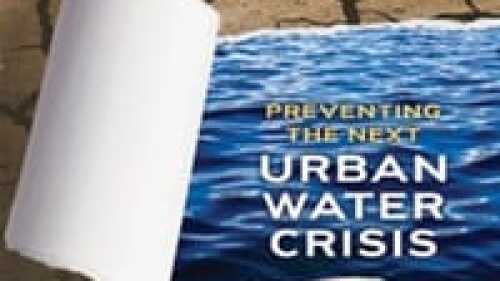Peter Calthorpe Island Press1718 Connecticut Avenue, NW, Suite 300, Washington, DC 20009; islandpress.org.2011. 225 pages. $35 hardcover.
There has been a crying need for this short, richly illustrated, cogent book to demonstrate the connection between the built environment (buildings and the transportation used to travel between those buildings) and energy use and emissions of greenhouse gases (GHGs). America’s gluttonous energy consumption, which on a per capita basis is twice that of Europe and many times that of almost every other country, has led it to being the top per capita emitter of GHGs by far. This will have to be addressed—and soon.
Author Peter Calthorpe, the 2006 laureate of the ULI J.C. Nichols Prize for Visionaries in Urban Development, is president and owner of an international urban planning firm, one of the founders of new urbanism, and author of some of the most important books on architecture and urbanism of the past three decades. These include Sustainable Communities (1986, cowritten with Sim Van der Ryn); The Pedestrian Pocket Book (1991, with Doug Kelbaugh), in which he introduced the concept of transit-oriented development; and The Regional City (2001, with Bill Fulton). With his track record of consistently being well ahead of the curve, one can understand why Newsweek named him one of 25 innovators on the cutting edge.
Those of us who still believe in science have been debating for nearly a generation how America will reduce its carbon footprint. Much of that discussion has focused on technological efficiencies on the supply side and cutting back on lifestyle on the demand side. This focus on supply-side efficiencies is important and a part of the solution, but it alone will not be sufficient to obtain the reductions required, recently documented in ULI’s Growing Cooler and Moving Cooler publications. Americans have not acted in union to sacrifice for a larger cause since World War II, and, unfortunately, there is little chance volunteerism will solve this challenge anytime soon. Market transformation is the key.
In spite of this gloom, Calthorpe has demonstrated that those who create the built environment, including members of ULI, actually have the number-one means of reducing energy use and GHG emissions—and, at the same time, giving the market what it wants. “Urbanism is, in fact, our single most potent weapon against climate change, rising energy costs, and environmental degradation,” he writes early in the book.
Here is the logic Calthorpe lays out:
- The built environment is responsible for over two-thirds of America’s energy use and GHG emissions.
- The spectrum of options by which the built environment is constructed can affect energy use and GHG emissions dramatically.
- Giving the market what Calthorpe terms “green urbanism,” which today achieves a tremendous per-square-foot price premium, thereby showing its market appeal, will get the country to where scientists say it needs to be in order to avoid irreparable climate change—an 88 percent reduction in GHG emissions by 2050.
Calthorpe does not stop by making his case for green urbanism; instead, he demonstrates how green urbanism can be implemented. This portion of the book only Calthorpe could have written, given his pioneering work with what is referred to as “scenario planning” for metropolitan areas. Calthorpe has developed the software to engage in future scenario analysis at the regional level on how to build the built environment ten, 20, and 30 years in the future. He is also spending much of his effort today implementing Vision California, required by two sweeping state laws, the state High Speed Rail Commission, and the new governor, Jerry Brown. Brown was responsible for luring Calthorpe to California in the first place in the 1970s, setting him on the course he has taken, so expect even further progress.
The tools Calthorpe and his associates are developing should and will be applied to metropolitan areas around the country. Metropolitan scenario planning—which involves understanding the unique economy of a metropolitan area that will drive the transportation planning, which in turns drives land use—should be the foundation for the next federal transportation bill. Scenario planning links the many direct and indirect impacts of the built environment, land use and conservation, transportation and other infrastructure, water and air pollution, economic growth, net fiscal impacts, health, etc. This process, a cousin to ULI’s Reality Check program, should provide ULI district councils with a crucial convening role that would fundamentally alter their region’s economy, as well as ULI’s future role as an organization.
Perhaps the most persuasive example of scenario planning was Calthorpe’s pioneering work of the past decade in metropolitan Salt Lake City, called Envision Utah. As a conservative, Republican part of the country, this fast-growing area would not be expected to embrace a politically correct, environmentally sensitive strategy. But a version of a green urban future is what the region selected and, as a part of that future, the region has locally invested in the second-largest light-rail and commuter-rail system under construction in the nation. Spearheaded by a “big tent” civic and business group, this green urban future was chosen only partly for environmental reason; the major reason was that the total infrastructure costs were far lower than those of continuing to sprawl, and economic growth was projected to be greater.
This book could prove to be the most important book of the year regarding the built environment, the most important book of the year in the environmental movement, and the most important real estate business book as well—quite a hat trick.


